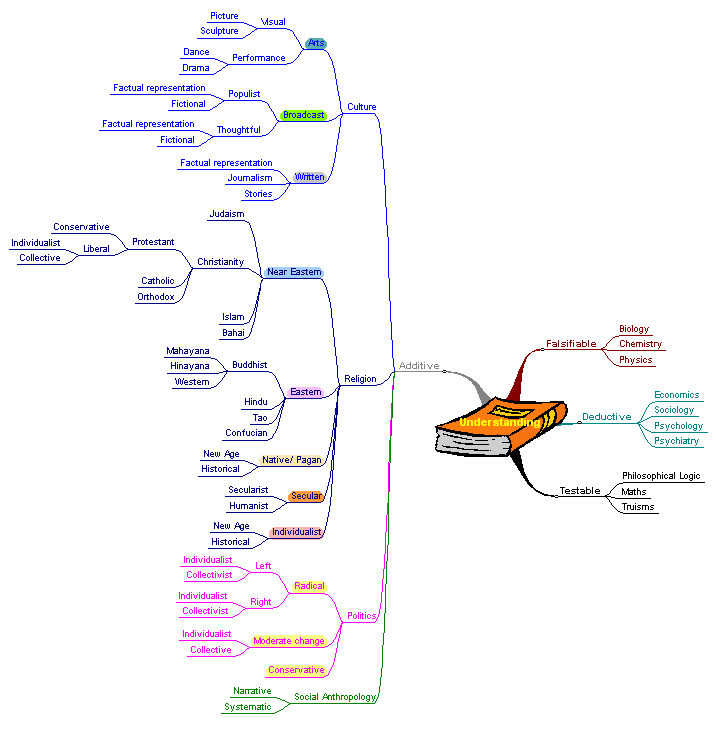
This is an example of a Mind Map, which you should disagree with and find incomplete! Move the mouse about it for notes in alt tag tooltips.

This is an example of a mind map, in this case taking as its core interest "understanding". This one takes levels of "proof" from truisms to falsifiability to deduction and being additive - from strong to weak perhaps. These second level branch labels are VERY debatable! Mind maps (after Tony Buzan) force a hierarchy of thought (though each of the above are on the same level because that level is form of understanding). They ask, "What comes first before this and what are the varieties that come after given this train of thought?" A program such as eMindMaps (its own documents are .emm files) allows sub-branches to be moved up down and around and even to become main branches. Each part can show notes (tooltips in HTML) and become hyperlinks to any document on the computer or online (both .emm and .html). Electronic Mind Maps are therefore potentially three dimensional (where a branch links to a whole tree, yet the core in eMindMaps cannot link to anything).
So a Mind Map aids thought and study. They can help revision, to see connections and therefore aid memory (an area of interest of Tony Buzan). But they have limitations.
|
|
The alternative textual approach with relatd facilities Treepad. It also facilitates conversion to tree menu linked HTML files. This is to be preferred when text notes are significant. See about this and a more research useful program, Literary Machine for more complex uses of linking words, concepts and text.
I certainly use vissual Mind Maps (copyright term owned by Tony Buzan and Buzan Organisation) but with a large question mark about their adequacy, just as when quantitative statistics should not be taken as an uncritically adequate representation of reality, precisely their opposite representation! I am more likely to use something like Literary Machine.
Buzan, T., Buzan, B. (2000), The Mind Map Book, Millennium edition, London: BBC Worldwide